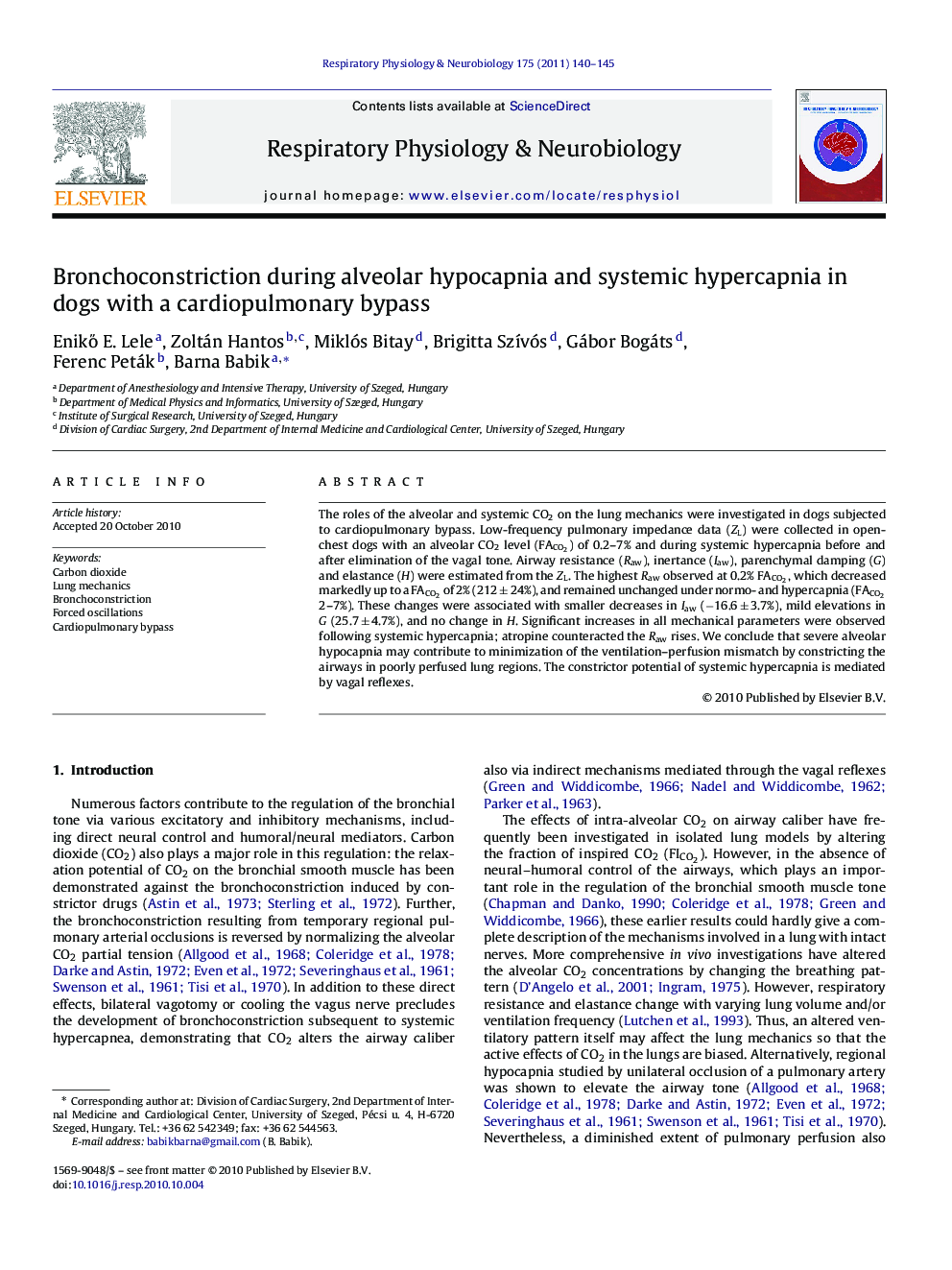| Article ID | Journal | Published Year | Pages | File Type |
|---|---|---|---|---|
| 5926574 | Respiratory Physiology & Neurobiology | 2011 | 6 Pages |
The roles of the alveolar and systemic CO2 on the lung mechanics were investigated in dogs subjected to cardiopulmonary bypass. Low-frequency pulmonary impedance data (ZL) were collected in open-chest dogs with an alveolar CO2 level (FACO2) of 0.2-7% and during systemic hypercapnia before and after elimination of the vagal tone. Airway resistance (Raw), inertance (Iaw), parenchymal damping (G) and elastance (H) were estimated from the ZL. The highest Raw observed at 0.2% FACO2, which decreased markedly up to a FACO2 of 2% (212 ± 24%), and remained unchanged under normo- and hypercapnia (FACO2 2-7%). These changes were associated with smaller decreases in Iaw (â16.6 ± 3.7%), mild elevations in G (25.7 ± 4.7%), and no change in H. Significant increases in all mechanical parameters were observed following systemic hypercapnia; atropine counteracted the Raw rises. We conclude that severe alveolar hypocapnia may contribute to minimization of the ventilation-perfusion mismatch by constricting the airways in poorly perfused lung regions. The constrictor potential of systemic hypercapnia is mediated by vagal reflexes.
